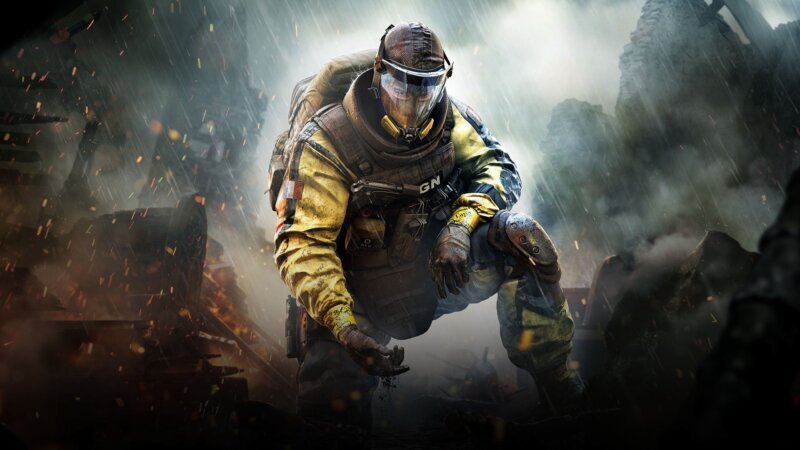
Greg Gabriel shares some more thoughts on how teams view the combine.
Yesterday, players started arriving in Indianapolis for the annual NFL Scouting Combine. It’s a very important part of the scouting calendar and process, but there are also many misconceptions about it.
Every year, I read articles about how players will raise their stock with a great workout. The truth is there are maybe less than a handful and usually none who actually raise their “stock.”
Why is that? “Raising stock” is the media’s way of creating drama for the event, and it creates headlines. But it’s not real.
Clubs don’t leave Indy, run into their draft room, and suddenly raise a player’s grade because of a workout. Don’t forget, what we see at Indy is not football; it’s a bunch of players doing athletic drills in shorts. It’s important to get these required measurements and times, but at the same time, we can’t overreact to them.
Players are expected to do well. Most invitees have spent the better part of the last six to eight weeks at performance camps getting ready for the workout. At these camps, they work on their starts, running form, explosiveness, and steps for each of the drills. They know the times can and do matter. We don’t get all excited about a great drill, but rather, we put up a red flag when a player performs poorly or less than expected.
During the college football season, when scouts write a report on a player, they also estimate his play speed and what kind of an athlete he is. Experienced scouts are pretty darn good at estimating these traits. When we get to Indy, and a player outperforms what was expected, it doesn’t mean raise his grade but rather, “let’s go back and re-look at some of his tapes to see where we missed on our estimates.” Also, it could mean that the player was a product of his time spent at the performance camp. It could also mean he doesn’t play to the athleticism he showed. In other words, we have to be cautious about overreaction to the workout.
Conversely, if a player does not perform up to expectations, we ask ourselves why. What has he been doing the last two months, or did we just miss on his athleticism when we made the school call?
Yes, a great workout creates some buzz for a few players, and we usually go back and re-watch the tape just to be sure what he is. Rarely do we see a player jump multiple rounds like we hear analysts talk about during the Combine.
In fact, if you look at realistic grades entering Indy and then compare that grade to where he actually gets drafted, you will see little change. The exception is with players whom the NFL clubs always had rated high, but the analysts, for whatever reason, did not have rated as high. When something like this happens, we start to hear the phrase that so and so the prospect is rising up draft boards when the reality is, the only board that he is rising on are the analysts!
What is important for team personnel at Indy is comparing player A to player B performing on the same surface at the same time at the same place doing the same things. It becomes an apples-to-apples comparison. So when a player skips a workout out at the Combine, we lose that comparison ability, but because he will work out at his Pro Day, it won’t affect his grade.
What Else Is Important?
The most important event of the Combine has always been the medical. That is the main reason the Combine came about. It has become a very inexpensive way for a large number of players to get the most thorough medical of their lives at the same time.
The next most important thing is the interviews. In many cases, it is the first time (Outside of All-Star games) that clubs get an opportunity to talk to these players.
Granted, 20 minutes is not a long time, and a team isn’t going to draft a guy based on that interview, but they sure as hell can decide not to draft a player based on how the interview went. I have sat in on several interviews where the player has totally turned off the coaches or scouts in the room with his attitude.
The results of the interview can have an effect on which players a club brings in for the allowed 30 visits. If, after the Inday interview, the club feels they need to spend more time with the player, they can easily bring him into their facility for a visit. They can also go to his school on a Pro Day or for a private workout to spend more time with the player. There have been several occasions where I have taken a player out to dinner the night before or just after the workout for a relaxing conversation.
In many interviews, especially with players who may have a checkered past, we have all the answers we need before we begin the interview. We then use the interview to see how truthful the player is when confronted with his past.
One year at Indy, there was a player whose talent we liked but had questions about his indiscretions while he was at school. In this case, the player had an arrest record, and we already knew exactly what happened because we had a copy of the police report. When we asked him what had happened, he told us the exact opposite of what the report said. As soon as he left the room, we made the decision to remove his name from our Draft Board. We expect players to be honest with us, and if they aren’t, there can’t be a trust factor.
There have been times when a player has been so impressive in the short interview that we come away from it knowing this is a player we may want to Draft.
Skipping the Combine Workout
A player is not required to take part in the workout phase of the Combine, but he is encouraged to. I have told several players that it’s always wise to work out at Indy, with the reason being if he has a less than satisfactory workout, he has a chance to do a makeup workout at his Pro Day. We are always going to use the best results, not strictly the Combine results.
If a player has a less than expected workout at Indy he has that second workout day, conversely, if he skips the Indy workout and has a bad day at his Pro Day he has no makeup chance. My feeling is always give yourself the best chance to succeed in front of evaluators.
A perfect example of this was with Devin Hester. By Devin’s standards, he ran poorly at Indy (high 4.4s), which was a slow time for him. He then decided to run at the Miami Pro Day about ten days later. On that day, he ran a 4.35, which was the kind of play speed he showed on tape. Had he not run at the Miami Pro Day, we may not have taken him in the second round of the 2006 Draft.
What Drills Are Important?
For each position group, different drills are more important than others. Obviously, with the skill positions (WR, DB, RB, TE), the 40 time carries a lot of weight because they are what we call “stopwatch” driven positions. In most cases, a club isn’t going to draft a slow guy or a skilled guy in a premium round.
With receivers, I always place importance on the jumps and agility drills. The jumps indicate the player’s explosiveness, and the agility drills test his body control and ability to come out of a cut. With defensive tackles, the 10-yard time can be more important than the 40. The jumps again show how explosive he is. With defensive ends, I put emphasis on both the 10 and 40 as well as the jumps and abilities. An edge player has to be explosive and flexible to be able to stay low and show bend coming off the edge.
The Quarterback Workout
It’s my opinion that the QB throwing sessions at the Combine are the least important drill done. It just isn’t set up for the player to perform well. He has no chance to get into any type of rhythm. At the Combine, a QB waits in line, makes two or three throws to receivers he has never seen before, and then waits five or six minutes before he has a chance to throw again. It’s ridiculous.
When an agent holds out a quarterback from the workout, I don’t know of any club that holds that against the player. We see a quarterback at his best on his Pro day and preferably a private workout.
Teams will learn some things at the Combine, but the work is far from done.

















You must be logged in to post a comment Login